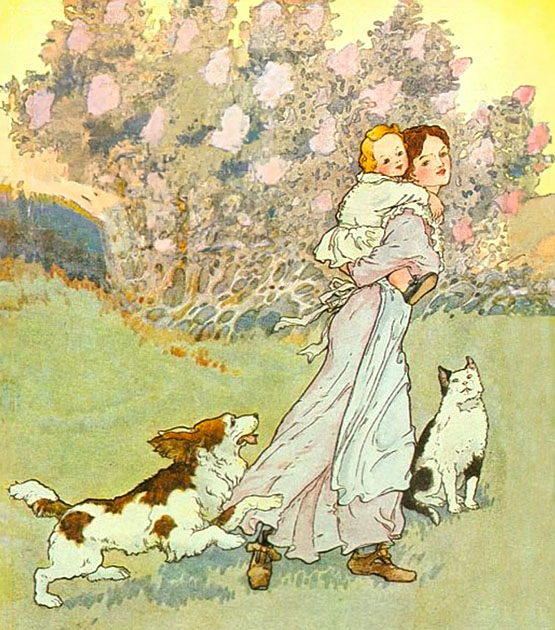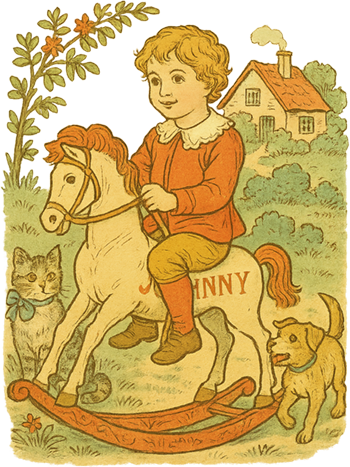Ride Away, Ride Away
Ride away, ride away,
Johnny shall ride,
And he shall have pussy-cat
Tied to one side;
And he shall have little dog
Tied to the other,
And Johnny shall ride
To see his grandmother.

Origins
This little verse appears in nursery collections of the early 19th century, sometimes under the title Johnny Shall Ride. It belongs to the playful class of rhymes that were meant not for reciting solemnly, but for acting out with a child on the lap. The short, trotting rhythm makes it easy to imagine how it was used: the words were sung or chanted while bouncing the child to imitate the motion of a horse.
 Play and Meaning
Play and Meaning
The rhyme is simple in content. Johnny is promised a ride, with a cat tied to one side and a dog to the other, and his destination is his grandmother’s house. To an adult, the picture might seem absurd — who would saddle a child with a cat and a dog at his sides? But to a child it is funny, a parade of familiar pets turned into companions for an imaginary journey. Rhymes like this worked less as stories than as sound and movement, ways to make a child laugh while engaging all their senses.
In the Nursery
“Ride away” rhymes were especially popular in the 18th and 19th centuries. They turned the adult’s knee into a horse, the child into a rider, and a few lines of verse into a lively game. Ride Away, Ride Away survives as a glimpse of that play, where rhythm, nonsense, and family life blend together in the simplest of ways.

